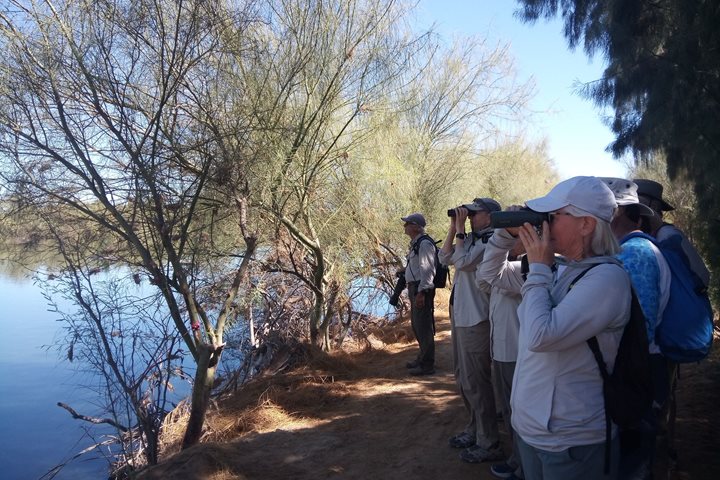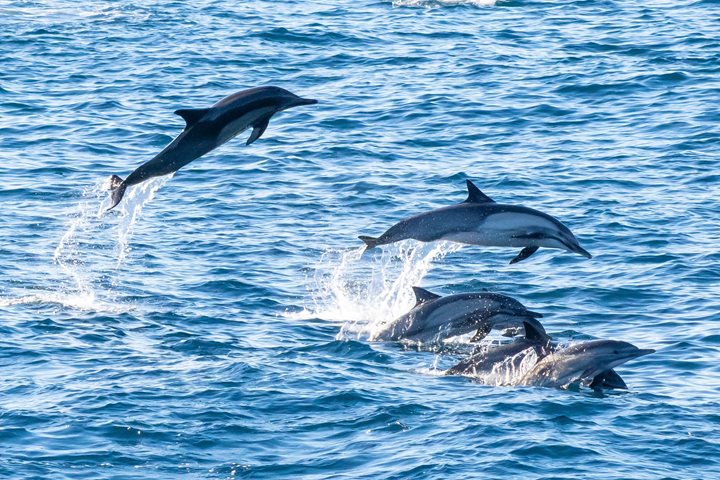“Rain here is only brief punctuation, a momentary breath between long dry stanzas.“
-- Jack Swenson, from the book A Special Expedition to Baja and the Sea of Cortez
In the last moments of darkness before sunrise, we slipped from National Geographic Sea Lion into our inflatable expedition crafts to begin our early morning explorations. The loud barks of California sea lions could be heard reverberating from the natural amphitheater ahead of our ship as the sky to the west began to glow red on the horizon, revealing the dramatic cloud formations above. Our most intrepid travelers set off for a first-light circumnavigation of Isla San Pedro Martir while others slept a little longer, waiting for a later departure.
San Pedro Martir is white (and peppered with cactus) from the accumulated guano deposited by its myriad of feathered inhabitants. Until the early 1900s the island was a major site of guano harvesting in the Gulf of California. It is now a preserve to protect the blue-footed boobies, brown boobies, red-billed tropicbirds, brown pelicans and other seabirds that nest there. During both cruises, animated encounters with rambunctious California sea lion youngsters again delighted all. There was also a most unusual, and exciting, sighting of a group of nine Guadalupe fur seals at Isla San Pedro Martir, perhaps a new colony developing in this region.
By 10 a.m. we were pulling anchor to head off for the rest of the day cruising in these marine mammal-rich waters. As we searched the horizon for telltale whale blows or splashing, a light drizzle moistened the ship, cool and refreshing. It’s very unusual to find rain in this area at this time of year. Throughout much of the day the ever-evolving clouds were interesting and beautiful elements in our photography. It wasn’t all that long until the very tall blow of a blue whale was found by our intrepid naturalist staff. The blue whale was somewhat evasive, likely feeding, doing long dives, and it kept coming up in different places. In time we were distracted by the splashes of incoming bottlenose dolphins, before we continued on our way south with the ever-evolving sky.
Later in the afternoon, with the Tres Virgenes volcanoes in the background, we encountered an active group of long-beaked common dolphins (conveniently, just as Rikki finished her “Shoebox” presentation). Continuing on, not far off from Santa Rosalia with Isla Tortuga and Isla San Marcos all in sight, we found a humpback whale as well as two fin whales. We spent the remainder of our day watching the fin whales moving back and forth through the area, along with mobula rays and smaller Humboldt squid, as they were all likely feasting on krill-like creatures massing just below the surface. The sun moved through bands of parting clouds and clearing sky as our captain skillfully tracked the whales’ progress. We were treated to gorgeous sunlight for our last whale watching moments before dinner, and during dinner as well.
All in all we had another great day with seven different marine mammal species sighted. Ahhhhh, we all love the Sea of Cortez.







